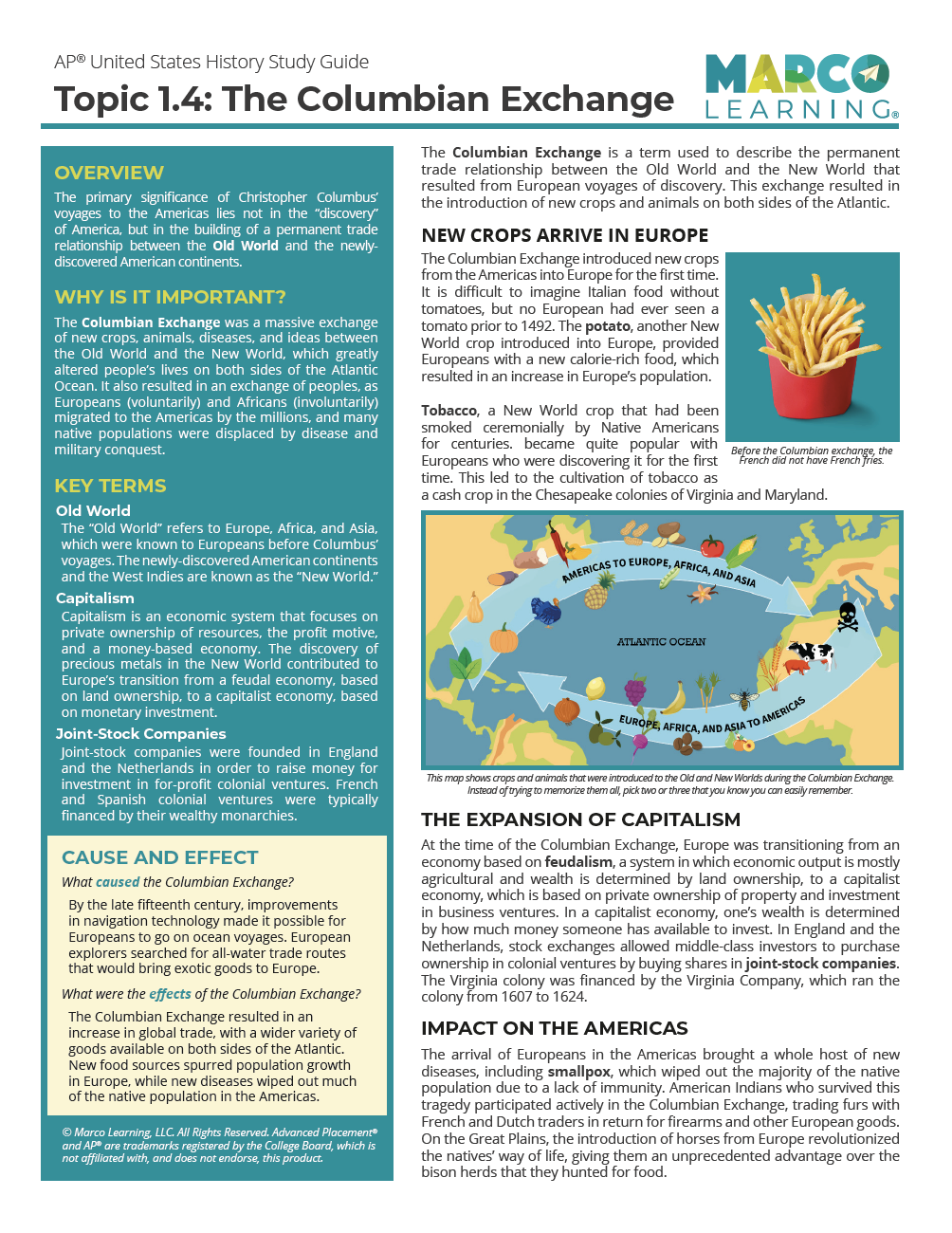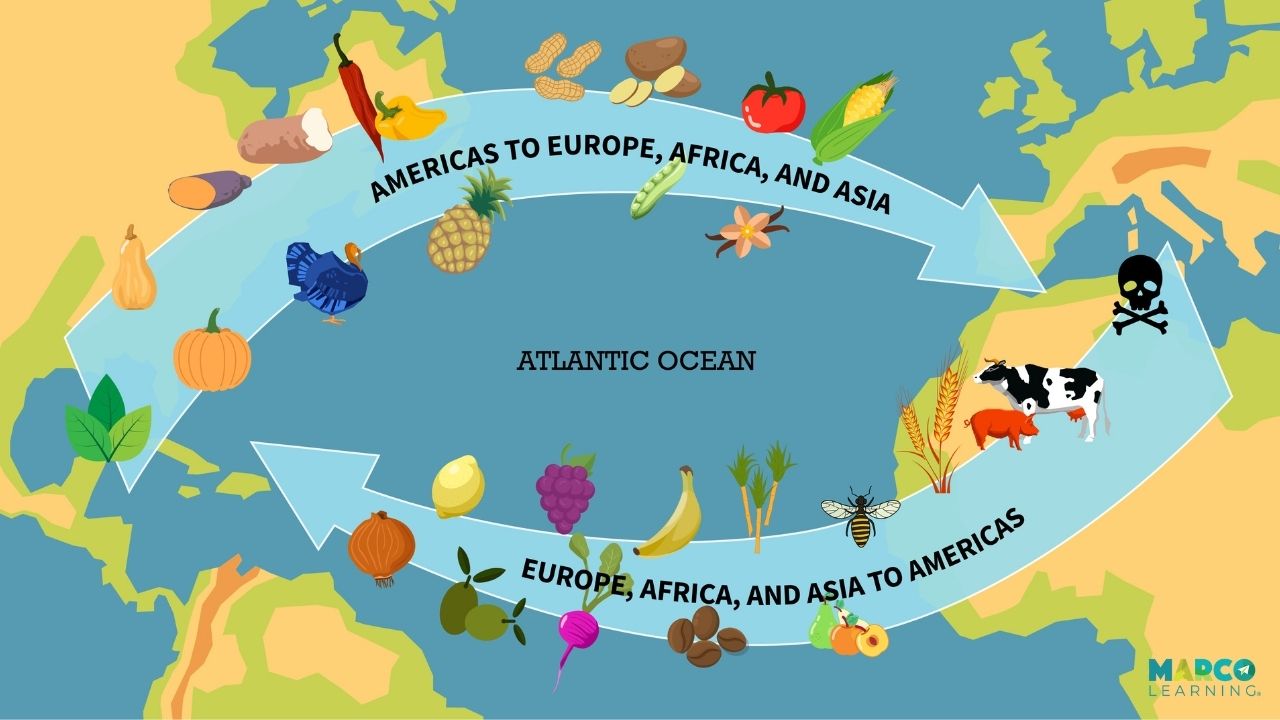APUSH Topic 1.4: The Columbian Exchange
The Columbian Exchange is one of the most featured topics in the AP® space, with relevance to all the AP® history courses (United States, European, and World History), as well as AP® Human Geography. Although each course examines the Columbian Exchange from a different angle, the major features of this expansion of global trade have the same relevance to all subjects, so although this Columbian Exchange Study Guide from Marco Learning is targeted toward AP® U.S. History students, it could prove useful beyond that course.

WHY WE HAVE FRENCH FRIES
The Columbian Exchange was a massive exchange of crops, animals, people, diseases, goods, and ideas between the Old World (Africa, Asia, and Europe) and the New World (the Americas), which greatly altered people’s lives on both sides of the Atlantic Ocean. The explosion of global trade then occurred as a result transformed goods that had either been unknown (or known as rare luxuries) into everyday items available even to people of all social classes.
The arrival of new crops on both sides of the Atlantic resulted in more varied diets and new patterns of consumption. Before the Columbian Exchange, there were no French fries, and the idea of a marinara sauce was foreign to Italy, as both the tomato and the potato were still confined to the New World, hidden from European kitchens. At the same time, there were crops, such as sugar and coffee, that were known in the Old World, but very rare and expensive. Once these crops found fertile soil in the New World, they became widely available. The increased demand for coffee and sugar-fueled the rise in the African Slave Trade, which resulted in the involuntary movement of millions of Africans to the New World. The non-edible tobacco plant also made a profound impact, as Europeans embraced the habit of smoking the novel substance, as Native Americans had been doing for hundreds of years

The impact of the Columbian Exchange on the populations of Europe and the Americas was drastically different. In Europe, the introduction of the potato resulted in a population increase due to the ease of growing the calorie-rich crop on European soil. However, the native population in the New World experienced a catastrophic decline due to a lack of immunity to European diseases, such as smallpox.
It is important to note that the Columbian Exchange was not entirely one-sided, as new goods from Europe altered American Indian lives, as well. Europeans brought horses with them, which diffused over North America over the course of the next two centuries made native tribes more mobile – especially in the Great Plains, where they were put to good use by migratory bison hunters. Natives also procured firearms, which helped them in the hunt but also made inter-tribal warfare more deadly and devastating.
One of the most significant exchanges that took place across the Atlantic was the intangible exchange of ideas. Europeans arrived in the New World with the intent of spreading Christianity to new lands outside of Europe. This was especially a priority for the Spanish and French monarchies, which actively encouraged the presence of Catholic priests in the New World to evangelize natives. Capitalism – an economic system based on private ownership and the profit motive – was an idea in development in Europe in the fifteenth century. Not only did the idea of capitalism arrive in the New World to greet a native population completely unfamiliar with it, but an increase in global trade and precious metals resulting from the Columbian Exchange accelerated the development of capitalism in Europe.
The best way to get better at something is by practicing.
That’s why it’s so important that you take practice tests to help you get better at the AP U.S. History Exam. Only then can you expect to get a good score—and even improve your score.
 Help
Help